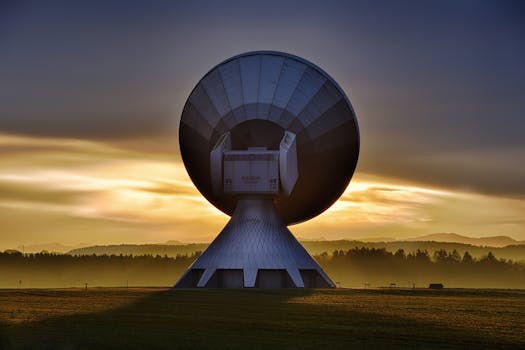
GEO Satellites: Unlocking the Power of Geostationary Orbit
GEO satellites, or Geostationary satellites, are a type of satellite that orbits the Earth at an altitude of approximately 36,000 kilometers, allowing them to remain stationary in the sky relative to a fixed point on the Earth’s surface. This unique characteristic makes GEO satellites ideal for a wide range of applications, including satellite communications, weather forecasting, and Earth observation.
At the beginning of our discussion about GEO satellites, it’s essential to understand the fundamental principles behind their operation. GEO satellites are launched into a geostationary orbit, which is a circular orbit that allows the satellite to maintain a fixed position in the sky. This is achieved by matching the satellite’s orbital period to the Earth’s rotational period, resulting in a satellite that appears to be stationary in the sky.
Applications of GEO Satellites
GEO satellites have numerous applications, including satellite communications, weather forecasting, and Earth observation. In the field of satellite communications, GEO satellites are used to provide broadband internet, television broadcasting, and mobile connectivity to remote areas. They are also used for navigation purposes, such as GPS, and for monitoring weather patterns and climate change.
GEO satellites are also used for Earth observation, providing valuable data on the Earth’s surface and atmosphere. This data is used for a wide range of applications, including land use management, disaster response, and environmental monitoring. Additionally, GEO satellites are used for scientific research, such as studying the Earth’s magnetic field and the effects of space weather on the Earth’s atmosphere.
Benefits of GEO Satellites
The benefits of GEO satellites are numerous and significant. One of the primary advantages of GEO satellites is their ability to provide continuous coverage of a specific region, making them ideal for applications that require real-time data. Additionally, GEO satellites are relatively low-cost compared to other types of satellites, making them an attractive option for many organizations and governments.
GEO satellites also offer high reliability and stability, with many satellites operating for 15 years or more. This makes them an ideal choice for applications that require long-term data collection and analysis. Furthermore, GEO satellites can be easily integrated with other technologies, such as ground-based systems and other satellites, making them a versatile and valuable tool for a wide range of applications.
Challenges and Limitations of GEO Satellites
Despite the many benefits of GEO satellites, there are also several challenges and limitations to their use. One of the primary challenges is the high launch cost, which can be a significant barrier to entry for many organizations and governments. Additionally, GEO satellites are subject to interference from other satellites and ground-based systems, which can impact their performance and reliability.
GEO satellites are also limited by their altitude, which can result in latency and signal delay. This can be a significant issue for applications that require real-time data, such as video conferencing and online gaming. Furthermore, GEO satellites are vulnerable to space weather and other environmental factors, which can impact their performance and longevity.
Future of GEO Satellites
Despite the challenges and limitations of GEO satellites, they are likely to remain a vital part of the satellite industry for many years to come. Advances in technology are expected to improve the performance and reliability of GEO satellites, making them an even more attractive option for a wide range of applications.
In addition, the development of new satellite constellations, such as the Amazon Kuiper System and the SpaceX Starlink constellation, is expected to further expand the capabilities and applications of GEO satellites. These constellations will provide global coverage and high-speed connectivity, making them ideal for applications such as broadband internet and mobile connectivity.
In conclusion, GEO satellites are a powerful tool for a wide range of applications, including satellite communications, weather forecasting, and Earth observation. While they have several benefits, including continuous coverage and high reliability, they also have several challenges and limitations, such as high launch cost and latency. Despite these challenges, GEO satellites are likely to remain a vital part of the satellite industry for many years to come, with advances in technology and the development of new satellite constellations expected to further expand their capabilities and applications.



